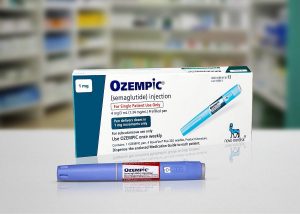COVID-19 is being diagnosed in Hispanic communities at a disproportionately high rate, a new study of the Baltimore-Washington, D.C., area shows.
Researchers found that among nearly 38,000 patients tested for SARS-CoV-2 at Johns Hopkins Health System, 16% were positive for the virus that causes COVID-19.
That figure was much higher — almost 43% — among Hispanic patients, according to findings published online June 18 in the Journal of the American Medical Association.
The results come amid growing recognition of the toll that COVID-19 has taken on racial minorities in the United States.
Data from states and cities have been revealing differences in who is contracting the virus and who is dying. But this is among the first published studies to measure the impact, said researcher Diego Martinez, an assistant professor at Johns Hopkins University School of Medicine in Baltimore.
The researchers found that while the Baltimore-D.C. area is not home to a large Hispanic population, those residents were testing positive for COVID-19 at a much higher rate.
Of 4,169 Hispanic patients tested, nearly 43% were positive for the virus — compared to roughly 9% whites and 18% of Black patients.
“The data corroborate what we’ve been seeing in the wards,” said co-researcher Dr. Kathleen Page, an associate professor of medicine at Johns Hopkins.
As for the underlying reasons, the study cannot answer that. But doctors’ experience on the ground gives “a sense of what’s going on,” Page said.
Hispanic patients often lack health insurance or have other difficulties accessing care, which means they may not get COVID-19 testing unless they are quite sick. And that would drive up their likelihood of testing positive.
But Page said Hispanics may also be at greater risk because many are essential workers and unable to stay home. Many also live in crowded housing, which makes social distancing difficult and feeds transmission within families.
Dr. Laurie Zephyrin is vice-president of health care delivery system reform for the nonprofit Commonwealth Fund in New York City.
She agreed that the inequities laid bare by the pandemic are likely related to both jobs and housing.
“People of color are often not able to socially distance and protect themselves,” Zephyrin said. And if a job does not allow paid sick leave, she added, employees may have to go to work even when they are unwell.
Hispanic patients who tested positive for SARS-CoV-2 were often younger, the study found. Of those ages 18 to 44, more than 61% tested positive — compared with about 28% of both white and Black patients in that age group.
Partly because they skewed younger, Hispanic patients were somewhat less likely to be hospitalized: 29% were, versus roughly 40% of Black and white patients, the investigators found.
Other research, though, has shown that people of color are disproportionately suffering the most severe consequences of COVID-19.
In their own analysis from April, Zephyrin and her colleagues found that death rates from COVID-19 were higher in U.S. counties with larger-than-average Black populations.
Early in the U.S. pandemic, Zephyrin noted, little data was being collected on patients’ race and ethnicity, making it difficult to understand the impact on communities of color. That has gotten better, she said, but there is still room for improvement.
In the midst of a pandemic, though, responses have to be quick, even when data are imperfect. Page said that engaging local community organizations has been essential to reach traditionally marginalized groups.
“They’re not only trusted sources of information, they also make it real,” Page said. Advice on social distancing, for example, may hold more weight when it’s coming from someone living in the community.
According to Zephyrin, paid sick leave, free SARS-CoV-2 testing, and better funding for “safety net” hospitals — which provide care regardless of patients’ ability to pay — are some measures that could help.
More broadly, she said, the pandemic has thrown a spotlight on longstanding racial inequities, in health care and other institutions.
More information
The U.S. Centers for Disease Control and Prevention has more on COVID-19 and racial disparities.
Copyright © 2025 HealthDay. All rights reserved.












-300x200.jpg)







-300x169.jpg)




